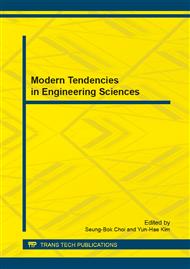p.101
p.106
p.113
p.123
p.127
p.135
p.140
p.145
p.154
Analysis on the Impact of the Backstays Forms on the Performance of Inclined Tower Cable-Stayed Bridge
Abstract:
In order to study the differences between spaces twisted backstay inclined tower cable-stayed bridge and conventionally cable-arranged cable-stayed bridge in mechanical property, this paper, taking a single-stay inclined tower space twisted backstays cable-stayed bridge as the study project, adopting FEM by changing the form of the backstays, makes a contrastive analysis on the difference between space twisted backstays cable arrangement (TBCA) and fan-shaped backstays cable arrangement (FBCA) in such aspects as static performance, dynamic property and stability. Some conclusions are concluded: the TBCA is easy to cause such problems as uneven distributed cable force, larger girders bending moment and stress; the integral rigidity of TBCA is less than that of FBCA; in stability, these two differ little, etc. As far as the overall comparison is concerned, TBCA is basically rational from the point of stress. However, while obtaining a certain visual effect, its mechanical property decreases somewhat.
Info:
Periodical:
Pages:
127-134
Citation:
Online since:
February 2014
Authors:
Price:
Сopyright:
© 2014 Trans Tech Publications Ltd. All Rights Reserved
Share:
Citation:


